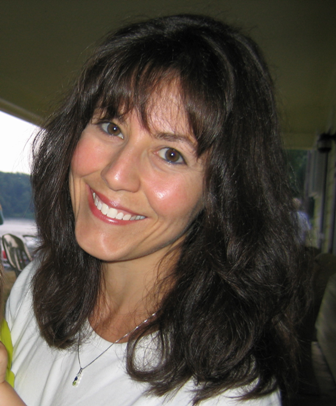When did you first set out on your dream to be a published author?
Just about three years ago, following the birth of my first daughter, I decided I better get my act together and starting living the dream I held in my heart. For me, there would be no integrity in raising a daughter to follow her dreams if I failed to show that I believed in the concept! Since that time, another daughter arrived along with a dog and a job outside the home. And, YES! I am a published writer of nonfiction (even penned a few short stories).
What got me that far is a set of guidelines I call The Writer’s Five Ps (Passion, Perspective, Priorities, Process, Present-mindedness). The Five P’s keep you focused, help you navigate through the storms that rise in life and make it possible to manage all the things that are important and special in your life without feeling burned out.
The Five Ps have kept my writing center-stage on a day-to-day basis. (For many aspiring writers, that’s half the battle). Still, I’m not quite where I want to be with my writing dream: to publish fiction.
In the pages of VanderMeer’s BookLife, I heard my own voice call to me: “I want a book life, now!”
Not surprisingly, my inner critique (The Burglar) answered, “How’s those FivePs workin’ out for ya, now?”
Contrary to Burglar’s modus operandi, I didn’t need to abandon the Five Ps. I just needed to rethink how I put them to work. BookLife helped me put the Five Ps to work strategically. Rather than just using the Five Ps to navigate my way through family life and get my butt in the chair everyday, I integrated VanderMeer’s approach with the Five Ps to put me on the path to my book life. In the three weeks since I began, I’ve done the following:
- wrote a stronger mission (artist’s statement)
- set more concrete long and short-term goals (achieved the following specific goals)
- my website is being redesigned
- a short story is under review for publication
- gained clarity on plot for a stand alone novel and developed concept for 3-book series
- secured a new column in a west coast magazine
I am a happier writer, still ranking high on the parenting chart (ask the kids) and I am more effective at change management.
I’m confident that my book will be in print or on an e-reader before the end of 2012 (I figure, if the world does end, or the great white light shines upon us, why not go out with a bang!).
You can do the same. Don’t let your inner Burglar rob you of your dream or cause you to abandon methods that have been working for you. Do use the voice of that inner critic to assess how your methods are working for you and what else you may need to get where you really want to be– to get a book life!
(Thanks, Jeff, for inviting me to share my experience as a Writing Parent on her way to getting a BookLife!) KMR
 Karen M. Rider is a freelance writer specializing in holistic health and metaphysical subjects. Her interviews with visionary thinkers such as Caroline Myss and Wayne Dyer have been published in regional and national publications. Karen also contributes to The Writer magazine. She is an accomplished advertorial copywriter serving holistic /healing arts practitioners and “soul entrepreneurs.” She resides in Connecticut with her two spirited daughters and (one very patient) husband. Karen is working on her first novel- a story of metaphysical suspense set at Gillette Castle in Connecticut.
Karen M. Rider is a freelance writer specializing in holistic health and metaphysical subjects. Her interviews with visionary thinkers such as Caroline Myss and Wayne Dyer have been published in regional and national publications. Karen also contributes to The Writer magazine. She is an accomplished advertorial copywriter serving holistic /healing arts practitioners and “soul entrepreneurs.” She resides in Connecticut with her two spirited daughters and (one very patient) husband. Karen is working on her first novel- a story of metaphysical suspense set at Gillette Castle in Connecticut.
